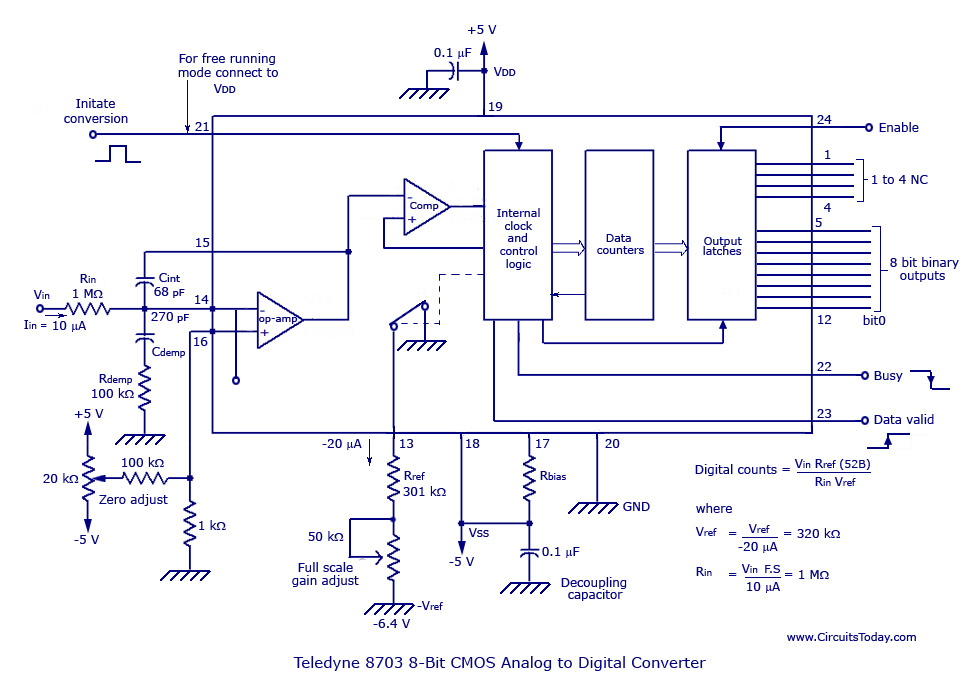The basic ANALOG TO DIGITAL (A/D) CONVERTER CIRCUIT has already been explained in an earlier post. Apart from it, there are also many types of monolithic analog to digital converters, such as the integrating A/D, integrating A/D with three-stage outputs, and the tracking A/D with latched outputs. In addition to this, the outputs of A/D are coded in straight binary, binary-coded decimal (BCD), complementary binary (l’s or 2’s), sign-magnitude binary, and so on. The figure below illustrates an 8-bit monolithic CMOS analog to digital converter with three-state output. The converter is made compatible with a microprocessor and it also exhibits high stability over a full temperature range. It has all the needed active elements, and has latched parallel binary outputs with strobed or free-running conversion. It has an infinite input range since any positive voltage can be applied through a scaling register Rin.
The circuit diagram of a Teledyne 8703 8-bit Monolithic CMOS analog to digital converter is given below. It is a 24-pin DIP package. (Courtesy: Teledyne Semi-conductor)
As in the case of monolithics, there are many hybrid A/D converters, such as the successive-approximation A/D with input buffer amplifier, the low-power CMOS A/D, the fast A/D with sample-and-hold, and the ultrafast A/D with input buffer amplifier. Datel Intersil’s hybrid ADC-815MC is a very high speed 8-bit successive-approximation A/D converter. It is capable of 8-bit resolution in only 600 nano seconds. It has a six analog-input voltage range with parallel or serial outputs and requires no calibration. Datel’s ADC-MC8B is an 8-bit monolithic multi-function A/D-D/A converter that operates on a single +5-V supply. It is a complete D/A converter that can be configured as an A/D converter by using an external comparator and a quad two-input Schmitt trigger NAND gate.
Similar to DIGITAL TO ANALOG CONVERTER, specifications such as resolution or nonlinearity are also used for A/D converters. Another important parameter for A/D is conversion time. Conversion time is the time required to convert an analog input into valid digital outputs. Typical applications of A/D converters include microprocessor interfacing, data printing and recording, digital voltmeters, and control of LED or LCD displays.


8 Comments
am trying to design a solar tracking system for maximum efficiency with pic16f877 and stepper motor. i also need and lcd display to compare the voltages. i need someone to help me with the software and circuit diagram.
good